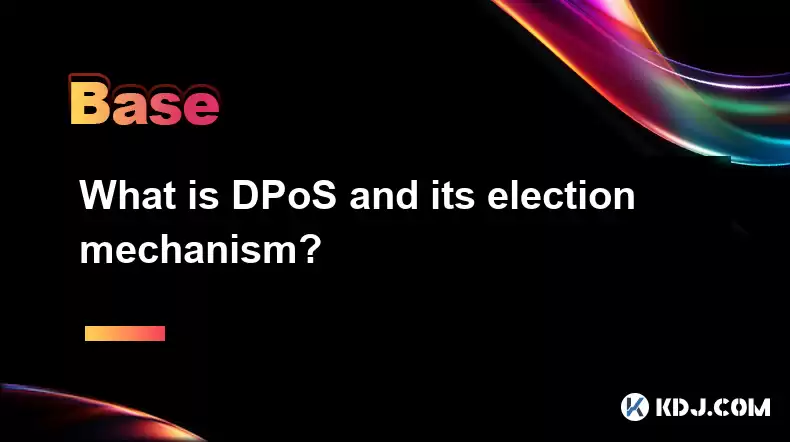-
 Bitcoin
Bitcoin $115100
1.27% -
 Ethereum
Ethereum $3675
2.71% -
 XRP
XRP $2.995
1.45% -
 Tether USDt
Tether USDt $1.000
0.02% -
 BNB
BNB $769.8
2.64% -
 Solana
Solana $168.0
3.25% -
 USDC
USDC $0.9999
-0.01% -
 TRON
TRON $0.3371
1.48% -
 Dogecoin
Dogecoin $0.2051
3.36% -
 Cardano
Cardano $0.7394
2.30% -
 Hyperliquid
Hyperliquid $38.15
0.42% -
 Stellar
Stellar $0.3966
-0.36% -
 Sui
Sui $3.486
2.93% -
 Chainlink
Chainlink $16.72
2.52% -
 Bitcoin Cash
Bitcoin Cash $568.0
4.36% -
 Hedera
Hedera $0.2440
2.59% -
 Ethena USDe
Ethena USDe $1.001
0.04% -
 Avalanche
Avalanche $22.16
2.06% -
 Litecoin
Litecoin $119.1
-0.73% -
 UNUS SED LEO
UNUS SED LEO $8.991
0.04% -
 Toncoin
Toncoin $3.232
-0.39% -
 Shiba Inu
Shiba Inu $0.00001233
2.82% -
 Uniswap
Uniswap $9.717
2.53% -
 Polkadot
Polkadot $3.664
1.85% -
 Dai
Dai $1.000
0.01% -
 Monero
Monero $281.2
-3.89% -
 Bitget Token
Bitget Token $4.350
1.55% -
 Cronos
Cronos $0.1428
5.07% -
 Pepe
Pepe $0.00001050
3.68% -
 Aave
Aave $262.3
3.54%
What is DPoS and its election mechanism?
DPoS enhances blockchain efficiency by letting token holders vote for delegates who validate transactions, ensuring a democratic and scalable network.
Apr 08, 2025 at 11:21 am

What is DPoS and its Election Mechanism?
Delegated Proof of Stake (DPoS) is a consensus mechanism used in certain blockchain networks to achieve distributed consensus. Unlike traditional Proof of Work (PoW) or Proof of Stake (PoS) systems, DPoS leverages a voting system to select a limited number of nodes, known as delegates or validators, to validate transactions and produce blocks. This article will delve into the intricacies of DPoS and its election mechanism, providing a comprehensive understanding of how it functions within the cryptocurrency ecosystem.
Understanding DPoS
DPoS is designed to enhance the efficiency and scalability of blockchain networks. In a DPoS system, token holders vote for a set number of delegates who are responsible for maintaining the blockchain. These delegates are typically chosen based on their reputation, technical capabilities, and commitment to the network. The primary goal of DPoS is to ensure that the network remains decentralized while improving transaction speeds and reducing energy consumption compared to PoW systems.
The Role of Delegates in DPoS
In a DPoS network, delegates play a crucial role in the validation and creation of blocks. They are elected by the community and are responsible for processing transactions and adding them to the blockchain. The number of delegates can vary depending on the specific implementation of the DPoS system, but it is generally kept small to ensure efficiency. For example, in the EOS network, there are 21 active block producers at any given time.
The Election Mechanism of DPoS
The election mechanism in DPoS is a critical component that ensures the democratic selection of delegates. Token holders within the network have the power to vote for their preferred delegates. The voting process is typically continuous, allowing token holders to change their votes at any time. This dynamic voting system ensures that delegates remain accountable to the community and can be replaced if they fail to perform their duties effectively.
Voting Process in DPoS
The voting process in DPoS is straightforward but requires active participation from token holders. Here is a detailed breakdown of how voting typically works:
- Token Holder Participation: Token holders must actively participate in the voting process by casting their votes for preferred delegates. The number of votes a token holder has is usually proportional to the number of tokens they hold.
- Vote Weighting: Each vote is weighted based on the number of tokens the voter holds. This means that token holders with more tokens have a greater influence on the election outcome.
- Continuous Voting: Voting in DPoS is continuous, allowing token holders to change their votes at any time. This ensures that the delegate list remains dynamic and responsive to the community's needs.
- Delegate Selection: The delegates with the highest number of votes are selected to become active block producers. The exact number of delegates can vary, but it is typically set to a fixed number to maintain network efficiency.
Ensuring Fairness and Decentralization
To ensure fairness and decentralization in DPoS, several mechanisms are implemented. One such mechanism is the voting threshold, which prevents any single entity from gaining too much control over the network. For example, some DPoS systems set a maximum percentage of votes that any one delegate can receive, ensuring a more balanced distribution of power.
Another important aspect is the rotation of delegates. In some DPoS networks, delegates are rotated periodically to prevent long-term monopolies and to give other qualified candidates a chance to serve as block producers. This rotation can be based on a fixed schedule or triggered by specific events, such as a delegate failing to meet performance criteria.
Security and Incentives in DPoS
Security in DPoS is maintained through a combination of economic incentives and technical safeguards. Delegates are incentivized to act honestly because they are rewarded with transaction fees and, in some cases, newly minted tokens. However, if a delegate acts maliciously, they risk losing their position and the associated rewards.
Incentives for token holders to participate in voting are also crucial. Some DPoS networks offer additional rewards or benefits to token holders who actively vote, encouraging greater community engagement and ensuring a more robust and decentralized network.
Examples of DPoS in Action
Several cryptocurrencies utilize DPoS as their consensus mechanism. EOS, Tron, and Lisk are notable examples of networks that employ DPoS. Each of these networks has its own unique implementation of DPoS, but they all share the common goal of achieving efficient and decentralized consensus.
In EOS, for instance, the network uses 21 active block producers who are elected by token holders. These block producers are responsible for validating transactions and adding them to the blockchain. The voting process in EOS is continuous, allowing token holders to change their votes at any time, ensuring that the network remains responsive to the community's needs.
Challenges and Considerations in DPoS
While DPoS offers numerous advantages, it also faces certain challenges and considerations. One of the primary concerns is the potential for centralization. If a small group of token holders holds a significant portion of the network's tokens, they could potentially control the election of delegates, leading to a less decentralized network.
Another challenge is the reliance on voter participation. For DPoS to function effectively, a significant portion of token holders must actively participate in the voting process. If voter turnout is low, the network may become vulnerable to manipulation by a small group of active voters.
Frequently Asked Questions
1. How does DPoS differ from PoS and PoW?
DPoS differs from PoS and PoW in its approach to achieving consensus. While PoW relies on computational power and PoS relies on the amount of stake, DPoS uses a voting system to select delegates who validate transactions and produce blocks. This makes DPoS more energy-efficient and scalable compared to PoW, and it introduces a democratic element that is not present in traditional PoS systems.
2. Can anyone become a delegate in a DPoS network?
In theory, anyone can become a delegate in a DPoS network, provided they meet the network's requirements and receive enough votes from token holders. However, in practice, becoming a delegate often requires significant technical expertise, infrastructure, and community support.
3. How are delegates incentivized to act honestly in DPoS?
Delegates in DPoS are incentivized to act honestly through a combination of economic rewards and the threat of losing their position. They receive transaction fees and, in some cases, newly minted tokens for their services. If they act maliciously, they risk being voted out by the community, which would result in the loss of these rewards.
4. What happens if a delegate fails to perform their duties in DPoS?
If a delegate fails to perform their duties in a DPoS network, they can be voted out by the community. Some networks also have mechanisms in place to automatically remove underperforming delegates, such as performance thresholds or scheduled rotations. This ensures that the network remains efficient and secure.
Disclaimer:info@kdj.com
The information provided is not trading advice. kdj.com does not assume any responsibility for any investments made based on the information provided in this article. Cryptocurrencies are highly volatile and it is highly recommended that you invest with caution after thorough research!
If you believe that the content used on this website infringes your copyright, please contact us immediately (info@kdj.com) and we will delete it promptly.
- BlockDAG, Litecoin, and Cardano: Charting the Course in Crypto's Dynamic Waters
- 2025-08-07 09:09:06
- Fireverse Token: Igniting a Musical Revolution in Web3
- 2025-08-07 08:27:45
- Ethereum, L2 Withdrawals, and Decentralization: A New Yorker's Take
- 2025-08-07 08:32:33
- Avalanche vs. Ruvi AI: Daily Sales Tell a Story of Crypto Disruption
- 2025-08-07 06:29:35
- DeSoc: The Crypto to Buy Now for a Decentralized Future (and Maybe 43x Gains!)
- 2025-08-07 06:50:16
- Arctic Pablo Coin: Riding the Meme Coin Wave with a Deflationary Twist
- 2025-08-07 07:18:13
Related knowledge

What is the difference between CeFi and DeFi?
Jul 22,2025 at 12:28am
Understanding CeFi and DeFiIn the world of cryptocurrency, CeFi (Centralized Finance) and DeFi (Decentralized Finance) represent two distinct financia...

How to qualify for potential crypto airdrops?
Jul 23,2025 at 06:49am
Understanding What Crypto Airdrops AreCrypto airdrops refer to the distribution of free tokens or coins to a large number of wallet addresses, often u...

What is a crypto "airdrop farmer"?
Jul 24,2025 at 10:22pm
Understanding the Role of a Crypto 'Airdrop Farmer'A crypto 'airdrop farmer' refers to an individual who actively participates in cryptocurrency airdr...

What is the difference between a sidechain and a Layer 2?
Jul 20,2025 at 11:35pm
Understanding the Concept of SidechainsA sidechain is a separate blockchain that runs parallel to the main blockchain, typically the mainnet of a cryp...

What is the Inter-Blockchain Communication Protocol (IBC)?
Jul 19,2025 at 10:43am
Understanding the Inter-Blockchain Communication Protocol (IBC)The Inter-Blockchain Communication Protocol (IBC) is a cross-chain communication protoc...

How does sharding improve scalability?
Jul 20,2025 at 01:21am
Understanding Sharding in BlockchainSharding is a database partitioning technique that is increasingly being adopted in blockchain technology to enhan...

What is the difference between CeFi and DeFi?
Jul 22,2025 at 12:28am
Understanding CeFi and DeFiIn the world of cryptocurrency, CeFi (Centralized Finance) and DeFi (Decentralized Finance) represent two distinct financia...

How to qualify for potential crypto airdrops?
Jul 23,2025 at 06:49am
Understanding What Crypto Airdrops AreCrypto airdrops refer to the distribution of free tokens or coins to a large number of wallet addresses, often u...

What is a crypto "airdrop farmer"?
Jul 24,2025 at 10:22pm
Understanding the Role of a Crypto 'Airdrop Farmer'A crypto 'airdrop farmer' refers to an individual who actively participates in cryptocurrency airdr...

What is the difference between a sidechain and a Layer 2?
Jul 20,2025 at 11:35pm
Understanding the Concept of SidechainsA sidechain is a separate blockchain that runs parallel to the main blockchain, typically the mainnet of a cryp...

What is the Inter-Blockchain Communication Protocol (IBC)?
Jul 19,2025 at 10:43am
Understanding the Inter-Blockchain Communication Protocol (IBC)The Inter-Blockchain Communication Protocol (IBC) is a cross-chain communication protoc...

How does sharding improve scalability?
Jul 20,2025 at 01:21am
Understanding Sharding in BlockchainSharding is a database partitioning technique that is increasingly being adopted in blockchain technology to enhan...
See all articles

























































































